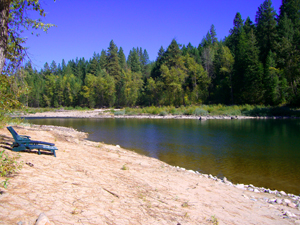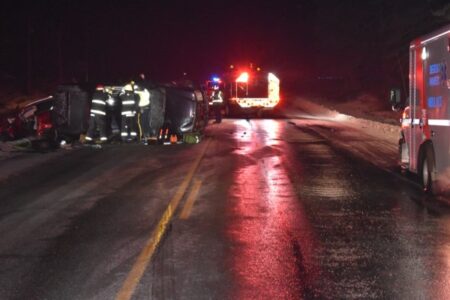Kettle River Q&A – Thinking outside the box
Recently we’ve been discussing how low river flows and high water use threaten fish and aquatic ecosystems in the Kettle River and tributaries. We are already considering options such as promoting water conservation, regulating water use in dry periods, and further curtailing fishing or harvesting in the river.
But it turns out the best long-term solutions may mean thinking ‘outside the box’ in terms of how we use water, plan buildings and landscaping, and manage vegetation and soils across the watershed.
Water management approaches to deal with problems of low flows and unreliable water supply traditionally falls into two broad categories, “supply-side” and “demand-side.”
Supply-side management seeks to improve the reliability of water supply by storing water and improving conveyance and treatment infrastructure to meet demands. The emphasis is on centralized decision-making, building dams, reservoirs, and treatment plants, with potable water delivered and wastewater treatment taken away for treatment.
Demand-side water management aims to lower water needs and relieve pressure on water supplies by promoting water conservation through tools such as marketing, education, pricing and incentives. Grand Forks’ new water metering initiative is a good example.
Both of these approaches tend to focus on “how” do we deliver more clean water, or improve conservation to get more out of each drop.
But in recent years a third approach has emerged that focuses more on “why”, blending appropriate tools from demand-side and supply-side water management. The “Water Soft Path” approach (developed in part by University of Victoria’s POLIS Water Sustainability Project) begins by thinking of water as a service rather than an end unto itself, recognizing that there are a number of ways to achieve the same result, with lower impacts.
For instance, a demand-side solution could be to reduce water consumption by switching to low-flow toilets. The soft path approach would look first at the service need, and then ask ‘why do we use water to carry away our waste then put partly treated water back to surface water, when there are viable alternatives such as composting, waterless, or on-site treatment?’
Or the soft path approach might go beyond promoting efficient landscape irrigation to develop policy, plumbing and health codes to enable recycling bathtub and washing machine water as well as rainwater.
These examples illustrate the soft path principle of matching the quality of water delivered to that needed by the end use. For instance, the Town of Oliver improved the quality of water for rural domestic uses by installing a new well, reservoir and parallel delivery system, which avoided treatment costs for water that was good enough for most agricultural use.
Another key principle of the soft path is that more good quality water needs to be left in streams and aquifers to provide for aquatic ecosystems and provide resilience to future drought; ecosystems are seen as legitimate users of freshwater and as the foundation of our economy.
This builds on the established practice of setting objectives for environmental water requirements (i.e. instream flow needs) or conditions on the quality of water returned to nature (objectives for wastewater treatment) that ensure the receiving environment isn’t compromised.
What works about the water soft path is the integration of existing tools from supply and demand-side management with new, wholistic thinking about watersheds and ecosystems.
Sometimes the ideas may challenge established policy, as with greywater systems, but the new approaches often provide resilient solutions for the new challenges of climate change mitigation and adaptation alongside existing challenges of water security and the expense of infrastructure.
– Graham Watt is the coordinator of the Kettle River Watershed Management Plan for the RDKB, and is working with a Stakeholder Advisory Group from across the region to develop the plan. Email plan@kettleriver.ca























Comments